information
biography
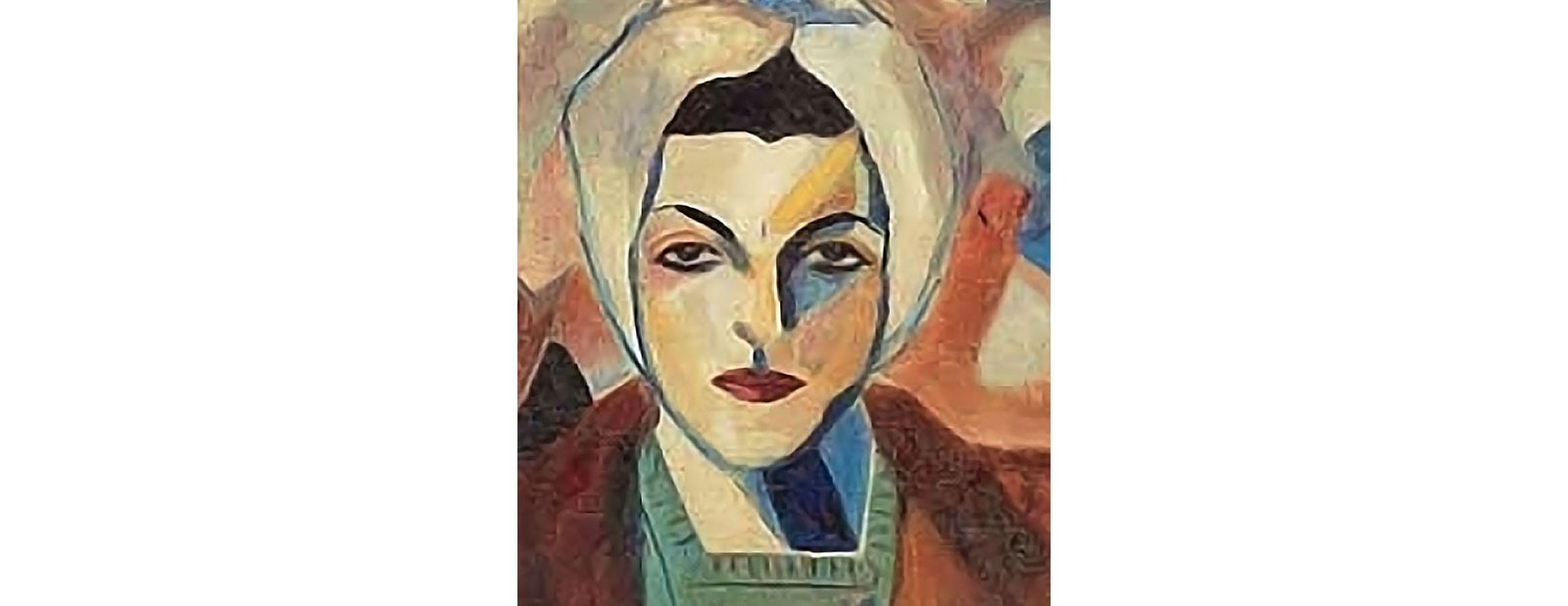
Saloua Raouda Choucair
(1916-2017)
Saloua Raouda was born in Beirut, Lebanon, in 1916. Her father, Salim Raouda, died in Damascus in 1917 while a conscript in the Ottoman army, so she and her two siblings were raised by their mother, Zalfa Amin Najjar. She studied at the Ahlia School and then graduated from the American Junior College for Women (currently the Lebanese American University) in 1936, where she concentrated on science.
In 1937, Saloua moved with her family to Iraq, where she started teaching drawing – a talent that came naturally to her – as well as science. Her interest in science and math later came to inform her art in some profound ways. She admired the absolute and concrete nature of these subjects, as she was able to see mathematical truisms in forms that she chose for her art pieces.
Upon returning to Lebanon, she studied for some time with the celebrated painter Omar Onsi. Her interest in abstract expression grew substantially during an extended trip to Cairo in 1943, where she was impressed by the sophistication and interconnection of lines and forms in the Islamic designs and architecture she saw in that city.
While enrolled in some philosophy classes at the American University of Beirut (AUB), she was told by one of her professors that Greek art was superior to Islamic art because Islamic art lacked human images. This was the catalyst for her commitment to pursue the artistic expression she found so essential.
Saloua traveled to Paris in 1948 on what was supposed to be a few months’ visit. However, she ended up staying more than three years, studying sculpture, lithography and fresco techniques, among other art forms. Her involvement with the Atelier de l’Art Abstrait provided her with stimulation and exposure to other abstract expressionists. “Those were fantastic years for me,” she recalled. The works of Delauney, Kandinsky, Vasarely, Duchamp, and Mondrian became part of her everyday discourse. She worked and grew, exhibiting her work where it was acclaimed for its power and originality.
She returned to Lebanon and married Youssuf Choucair in 1953, who was a journalist at that time. Their only child, Hala, said of her mother: “Growing up with her was fun because she was always playing, but everybody respected her passion.” Saloua obviously enjoyed being a mother, but never stopped her pioneering work, vitally looking for inspiration in modernity and the scientific developments that have always fascinated her.
Saloua experimented with a wide range of materials and became famous for her sculptures that were composed of several individual pieces that could be either separated or assembled – just like the verses of an Arabic poem. While cherishing science, she also intuitively followed the Sufi experience in applying her artistic concepts. The final shape that she envisioned was an abstract form with infinite interactions, a blend of equations that existed between the elements of the piece and their surroundings.
Saloua’s theories and creations went largely unappreciated and misunderstood for many years. She remained largely unknown outside of a small circle of art lovers until a major 2011 retrospective in Beirut that introduced her to a new generation of national and international audiences. That was followed by a 2013 exhibition at the Tate Modern in London, which showcased a variety of her pieces and earned her enormous international public and critical praise.
Consequently, Saloua’s work started receiving increasing global recognition, becoming part of the permanent collections of major museums around the world. Those include the Museum of Modern Art and the Metropolitan Museum in New York; the Art Institute of Chicago; Centre Pompidou in Paris; Tate Modern in London; Guggenheim Abu Dhabi; Sharjah Art Foundation and Mathaf: Arab Museum of Modern Art, Doha, Qatar, among others.
Saloua was also awarded an honorary degree of Doctor of Humane Letters by AUB in 2014, which was followed by the installment of one of her major sculptures on campus in 2018. In addition, the Lebanese government honored her posthumously by featuring one of her paintings on a postal stamp in 2021.
TIMELINE
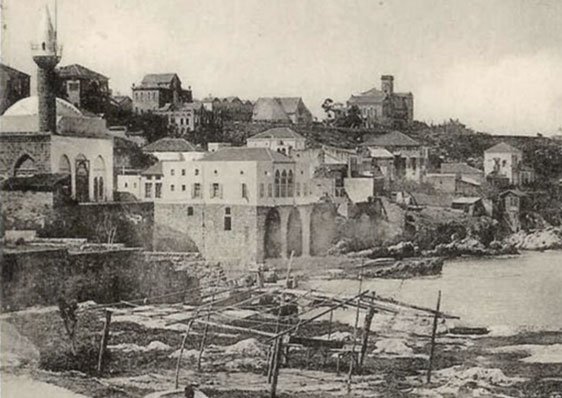
1916
Born in Ain El Mreiseh, Beirut, Lebanon. Her father, Salim Rawda (1872-1917) was an expatriate in Australia who traded in herbs and wrote a manuscript on their medicinal values. He returned to Lebanon in 1910 and married Zalfa Amin Najjar (1891-1995) from Abadia, a student at Brummana High School who was fond of reciting poetry. Her brother Anis Rawda (1913-2016) was a business man and a member of the Beirut municipality. Her sister Anisa (1913-2016) was a social activist who was married to Fouad Najjar.
1917
Her father died of typhoid in Damascus where he was a conscript in the Ottoman army.
1924
Enrolled in the Ahlia School, where she designed school posters and was known for drawing caricatures of her teachers, some of which were printed in the school’s newspaper.
1932
Completed her secondary school studies at the Ahlia School.
1933
Enrolled in the French Secular School to learn French.
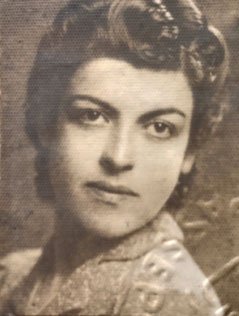
1934
Enrolled in the American Junior College for Women (currently the Lebanese American University) and earned a sophomore degree in natural sciences in 1936.
1937
Moved with her parents to Iraq, where she taught natural sciences and drawing at Kirkuk Elementary School until 1941.
1940
Choreographed a dance that her students performed at a reception for Prince Abdel Ilah, the Regent for the Iraqi throne.
1942
Was tutored by Lebanese artist Omar Onsi.
1943
Spent seven months in Cairo. Museums were all closed because of the war, so she visited old mosques and buildings to acquaint herself with Islamic art. The experience left lasting impressions that later had a profound effect on her art.
1945
Worked at the American University of Beirut’s library, where she also enrolled in some philosophy and history courses.
1946
Met artist Moustapha Farroukh, president of the university’s Art Club at that time, who published one of her drawings in the club’s only issue of Art Gazette. Supervised art activities at the Arab Cultural Club, for which she organized exhibitions and a series of lectures on figurative art until 1948.
1947
Exhibited some of her geometrical gouache drawings at the Arab Cultural Club.
1948
Organized an exhibition at the Club of the art collection of the French archaeologist Henri Serigue, who lived in Beirut at that time. The collection included paintings by Picasso, Kandinsky, Miró, Klee, Calder, Braque, Gonzalez and others. It was the first time that art of such renowned artists was shown in Beirut. Moved to Paris, where she stayed for three and a half years. Joined the Academy of Fine Arts and received some lessons in drawing, mural techniques, engraving and sculpture. Frequented the “Grande Chaumière” free atelier to practice drawing and painting nude models.
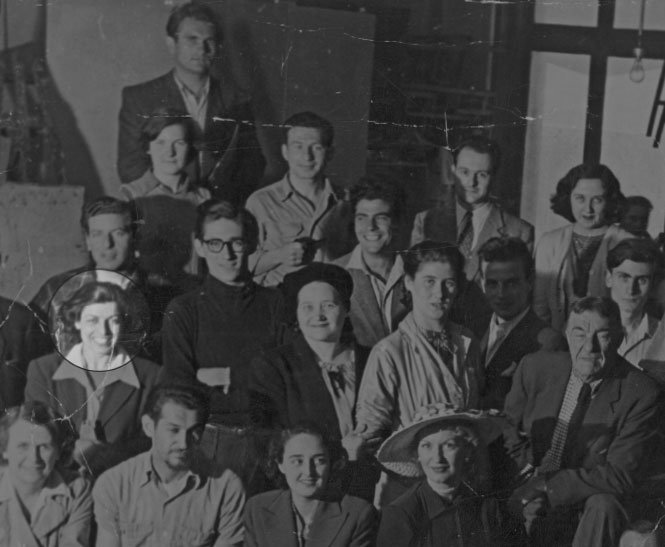
1949
Joined the Fernand Leger atelier, but left three months later upon realizing that its concepts and methods were not compatible with her aims in art. During her stay in Paris, she met and befriended a number of well-known artists, among them Pevsner, Vasarely, Poliakoff, Léger, Sonia Delaunay, Mrs. Kandinsky, Mortensen, Jacobsen, Kelly, Holley, Konka, Pensky, Dewasne and Pillet. Spent the summer visiting Italy’s artistic and historical sites.
1950
Worked at the abstract art atelier of artists Dewasne and Pillet as an administrative assistant in charge of interviewing artists and preparing lectures.
1951
Had her first exhibition in Paris at the Colette Allendy gallery. The show, which included paintings previously exhibited in Beirut along with those painted in Paris, was enthusiastically reviewed by the art critics of the “Art” and “Art d’Aujourd’hui” magazines. She also participated in the Realités Nouvelles Salon of that year. Returned to Beirut.
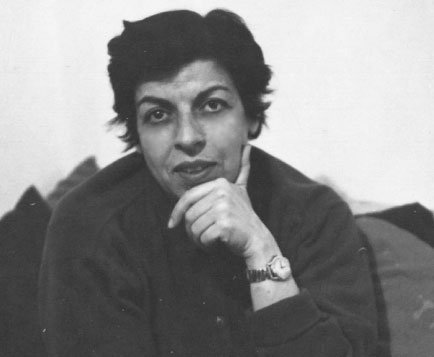
1952
Exhibited geometrical abstract paintings at the St. Joseph University in Beirut, the first show of its kind in the Middle East.
1953
Married Youssuf Choucair (1914-1999).
1954
Worked with the United States Point Four Program until 1956.
1955
Was invited by the Point Four Program to visit the United States, where she spent a year learning the techniques of enameling and jewelry-making in various workshops. She also visited major American museums around the country.

1957
Had her only child, Hala.
1962
Held a retrospective exhibition at the UNESCO Palace in Beirut. The show, which was entitled “Materials” and consisted of 67 pieces, included sculptures in stone, wood, terracotta and metal, as well as gouache paintings, tapestries, pottery, enameled copper and jewelry. After this exhibition, she concentrated exclusively on sculpture.
1963
Awarded the Lebanese Palace of Justice award.
1965
Participated for the first time in the Spring Salon held by the
Lebanese Ministry of Education and Culture, and continued her
participation until 1974.
Awarded first prize for sculpture at the Autumn Salon of the
Ibrahim Sursock Museum.
1966
Awarded third prize for sculpture at the Autumn Salon of the
Ibrahim Sursouk Museum.
Won a National Council of Tourism prize for the execution of a
stone sculpture for a public site in Beirut.
1967
Awarded first prize for sculpture of the Autumn Salon of the Ibrahim Sursock Museum.
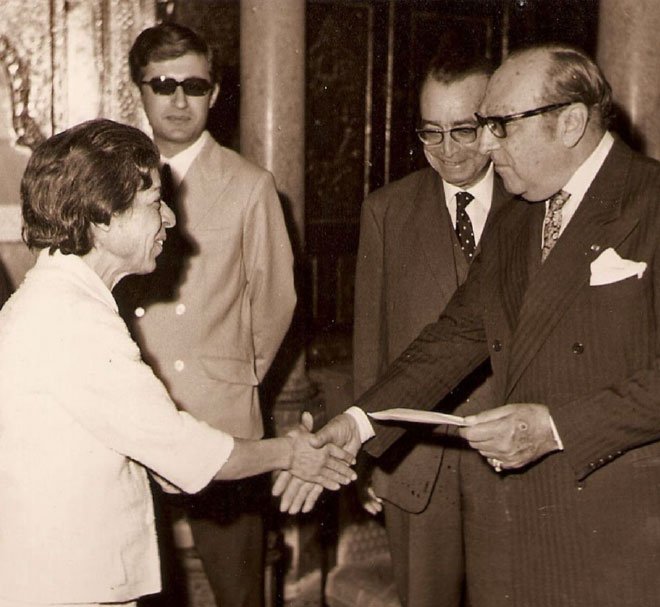
1968
Awarded second prize for sculpture at the Autumn Salon of the
Ibrahim Sursock Museum.
Won second prize for sculpture at the Alexandria Biennial
Exhibition.
Invited by the French Ministry of Culture to spend a year inParis,
where she was introduced to a number of internationally known
artists, among them Soto, Le Parc, Viscux, César, Cruz-Dies,
Antonio Assis, Contreras Brunet, Féraud, Nino Kallos, Chavigner,
Cosman, Frank Poper, Ivaral, Yamagushi and Kastohero.
1970
Invited to exhibit her art at the Salon de Mai in Paris; she continued to participate in this prestigious event until 1977, when the circumstances of war in Lebanon caused her to decline further invitations.
1972
Received the Award of Excellence from the Ministry of Education
and Culture.
She was the first Lebanese artist to receive this prize.
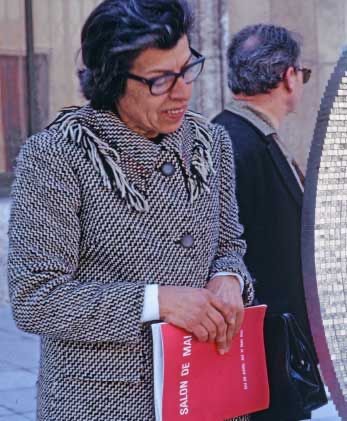
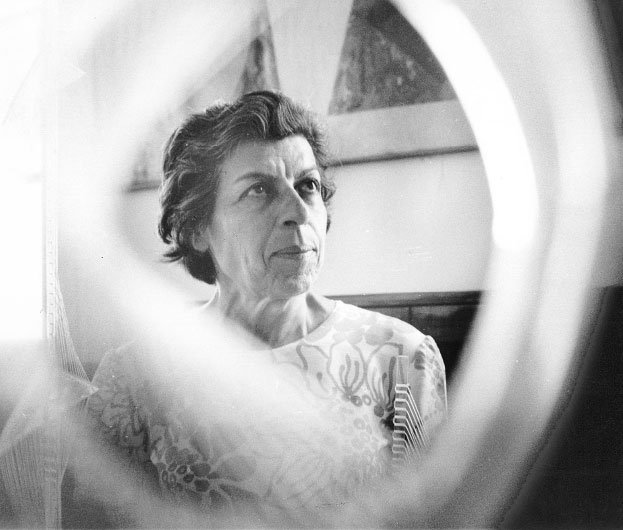
1974
Held a retrospective exhibition covering 30 years of her artwork
at the Glass Pavilion of the Ministry of Tourism in Beirut under
the sponsorship of the Association of Lebanese Painters and
Sculptors.
She was the first Lebanese artist to have a solo show at the
pavilion.
1977
Exhibited her recent sculptures at Contact Art Gallery in Beirut.
Began teaching sculpture at the Architecture School of the
Lebanese University, and continued until 1984.
1980
Received a special award for sculpture from the Arab Union of
Artists.
Invited by the Government of Iraq to spend one month in that
country.
1983
One of her sculptures was purchased by the Lions Club of Lebanon and installed in a public site at the southern entrance to Beirut. The piece was destroyed during the war in Lebanon.
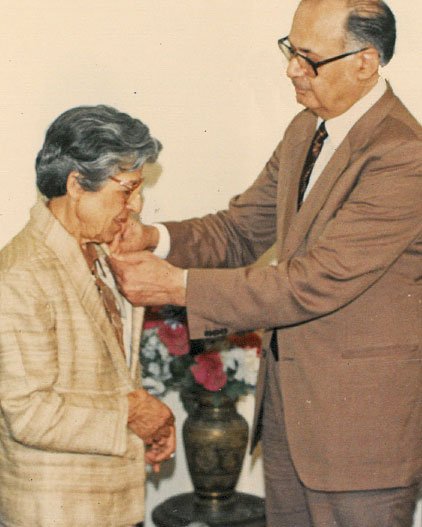
1985
Honored by the General Union of Arab Artists.
1986
Lectured on sculpture at the School of Engineering and Architecture at the American University of Beirut.
1988
Held an exhibition of more than 40 sculptures at Al Montada Gallery in Beirut, during which Prime Minister Salim Hoss decorated her with the National Cedars Medal (Knight rank). The event also included a seminar about the development and evolution of her art.
1991
Accepted an invitation by the French Government to visit Paris for two weeks.
1992
Honored by the Antelias Cultural Movement as part of its program to honor Lebanese cultural icons.
1993
Had a retrospective at the Al Nadwa Gallery in Beirut. During the
honoring ceremony, Minister of Education and Culture Michel
Edde decorated her with the Cedars Medal (Commander rank).
Participated in the “Forces of Change” exhibition at the National
Museum of Women in the Arts in Washington, D.C.
1994
Received an appreciation plaque from the Arab Cultural Club commemorating her artistic contributions over half a century.
1997
Received a special tribute at the Third Sharjah Biennial of Art.
1998
Honored by the Association of Lebanese Painters and Sculptors.
and by the Ministry of Culture.
Honored in an apperception exhibition held by International College in Beirut.
Received the annual Abdel Hadi Debs award for
the Arts.
Two of her stone sculptures (330 cm x170 cm x70 cm cach)
were purchased by Solidere (the Lebanese Company for the
Development and Reconstruction of the Beirut Central
District) and installed in a park facing the United Nations
House in Beirut. Solidere also purchased a semicircular stone
bench (56 cm x 179 cm x 70 cm) composed of 17 pieces, which
was also installed in a public park near Riad El Solh Square
in Beirut.
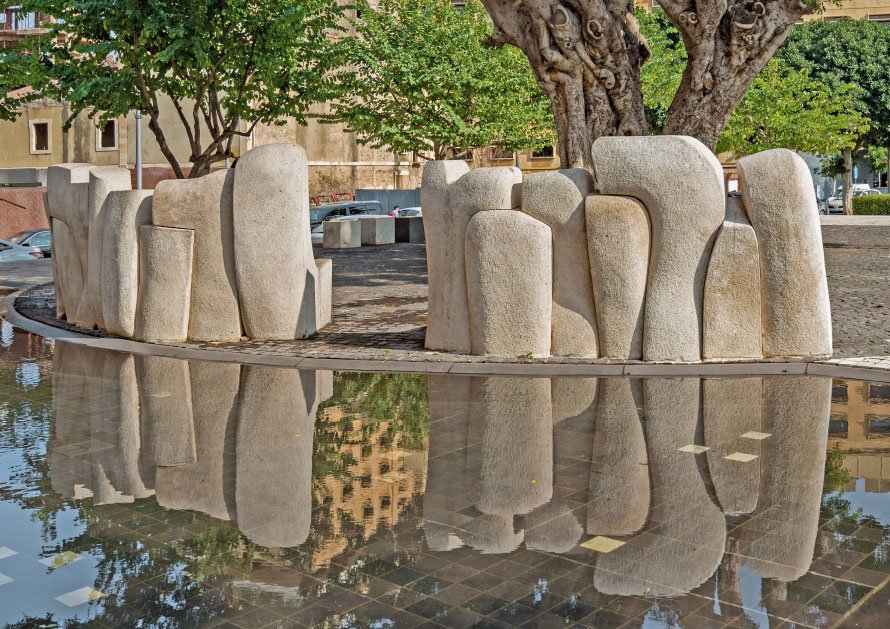
1999
Received the Award for Innovations of the Fouad Makhzoumi Foundation of Lebanon.
2001
Received special award from the National Council of Lebanese Women on International Women’s Day.
2002
Received appreciation award from Haigazian University, Beirut.
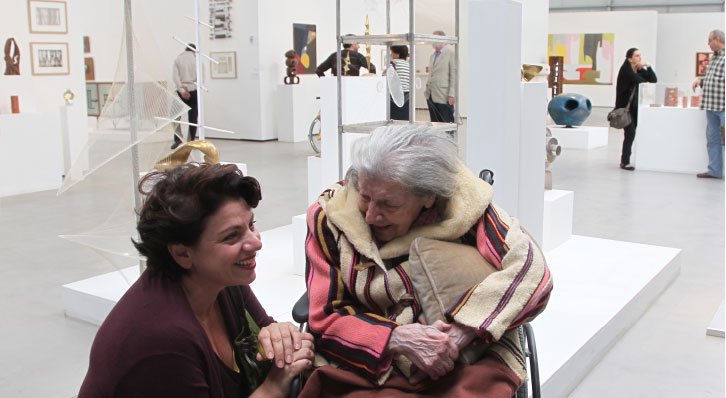
2011
Retrospective at the Beirut Exhibition Center, curated by her daughter Hala Schoukair.
2013
The Tate Modern held the first international retrospective of Choucair’s work.
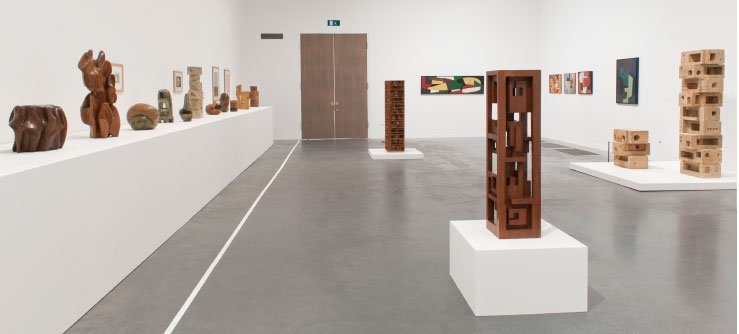
2014
Received a prestigious honorary doctorate from the American
University of Beirut.
Her artwork “Poem” was on loan to Louvre Abu Dhabi.
2016
Choucair turned 100 in June.
2017
Choucair died on January 26.